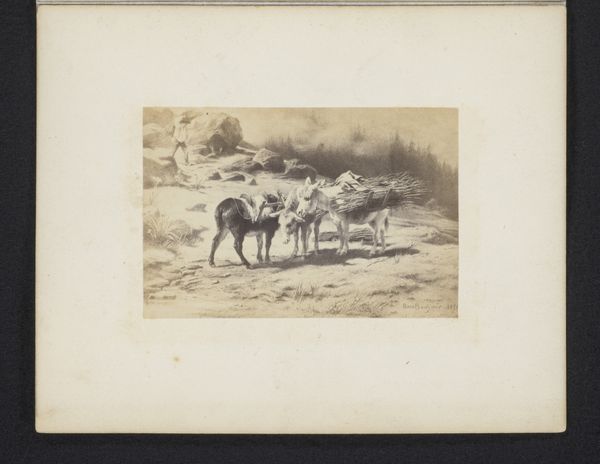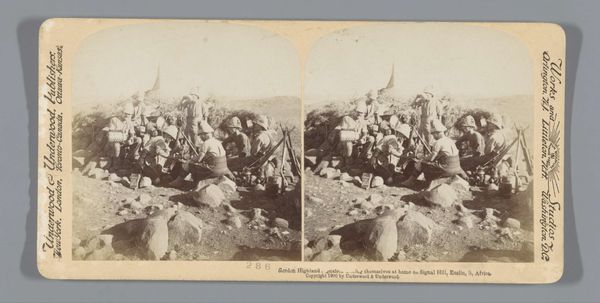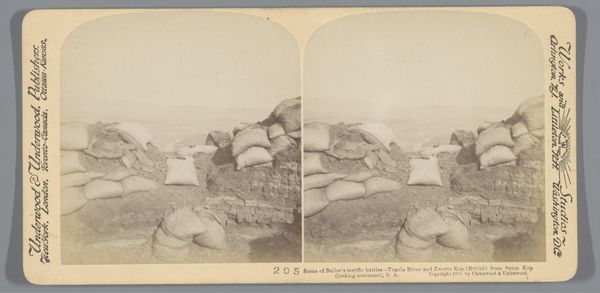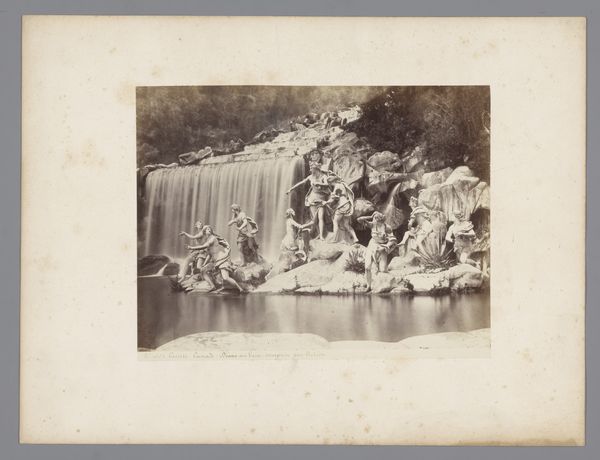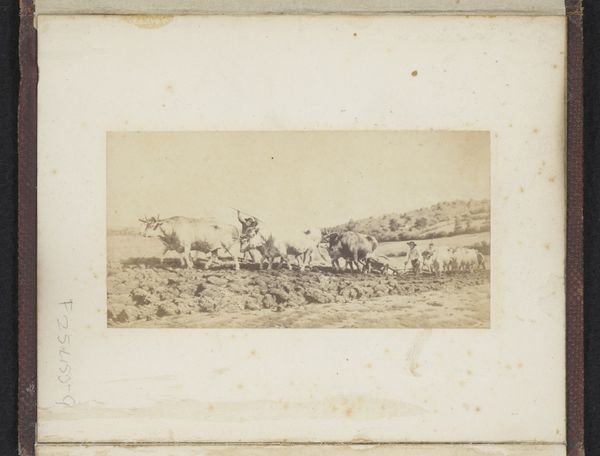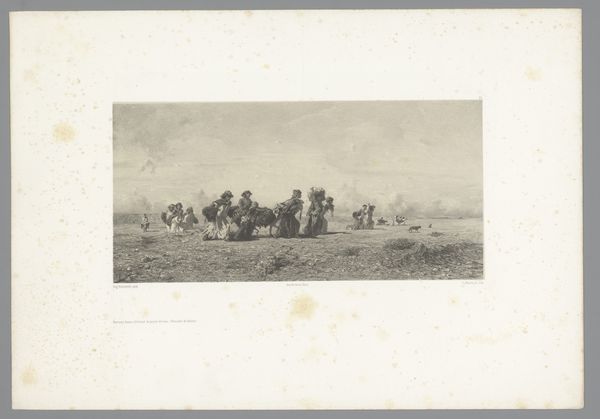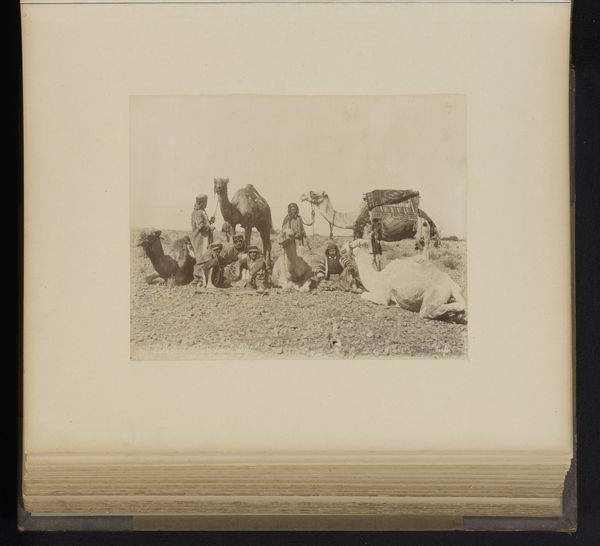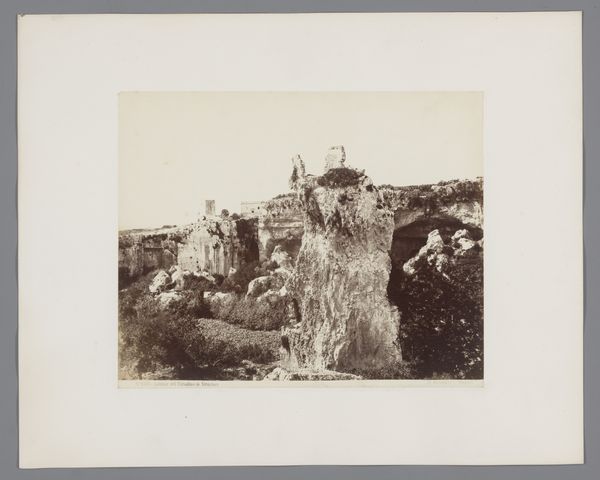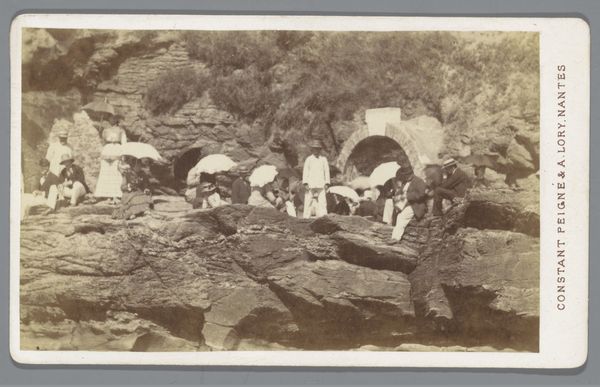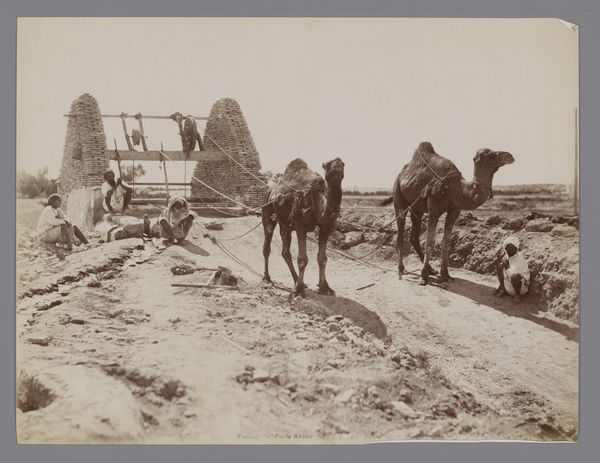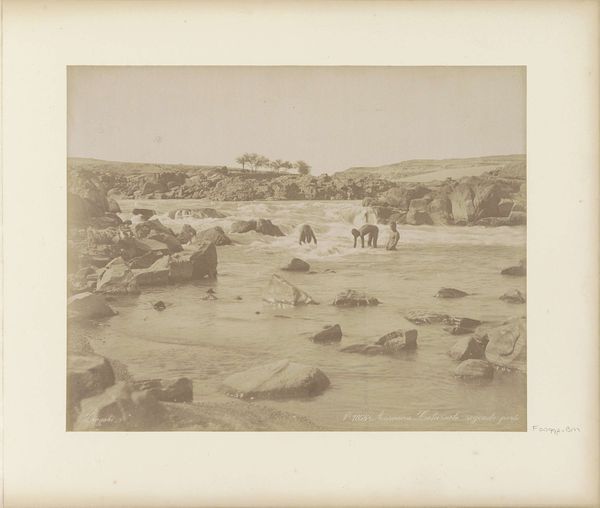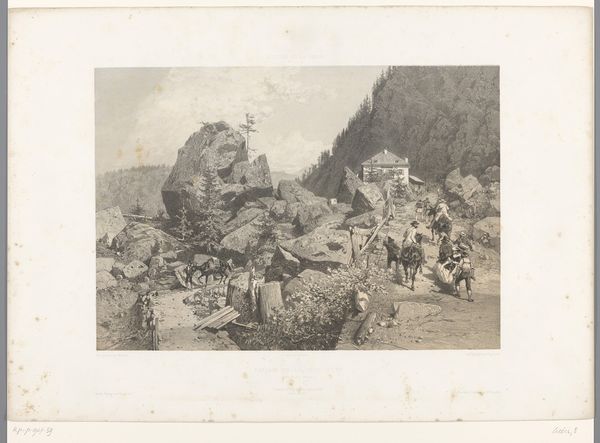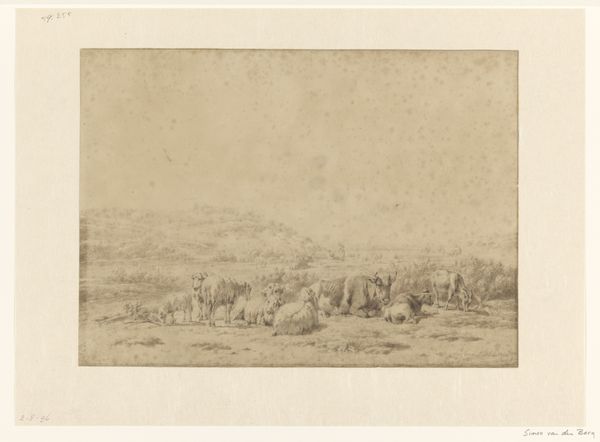
albumen-print, photography, albumen-print
#
albumen-print
#
portrait
#
woman
#
light pencil work
#
16_19th-century
#
landscape
#
photography
#
group-portraits
#
italy
#
albumen-print
Copyright: Public Domain
Giorgio Sommer captured this image in Naples, showing figures standing on the edge of Mount Vesuvius's crater. At first glance, we see tourists, yet beneath lies a potent symbol: the volcano itself. Throughout history, volcanic fire has been a powerful motif, embodying destruction, purification, and rebirth. Vesuvius, in particular, evokes the tragic fate of Pompeii, a moment frozen in time, reminding us of the fragility of civilization. Yet, even here, amidst the cooled lava, life persists. Consider the cyclical nature of this symbol. In ancient myths, fire is both a tool of the gods and a force of chaos. It appears in countless forms—from the forge of Vulcan to the fiery depths of the underworld. Even today, the volcano resonates. It is a reminder of nature's untamed power, a psycho-emotional symbol that is deeply embedded in our collective memory.
Comments
stadelmuseum about 2 years ago
⋮
Um die Mitte des 19. Jahrhunderts rückte der Vesuv aufgrund einer Reihe gewaltiger Ausbrüche in den medialen Fokus. Er wurde zum beliebten Ausflugsziel, das bei den Besuchern für Nervenkitzel sorgte. Begleitet von Führern und Trägern, ließen sie sich vorbei an den surreal anmutenden Gesteinsformationen zum Krater bringen. Davon profitierte nicht zuletzt auch die einheimische Bevölkerung, der sich ein neuer Geschäftszweig eröffnete. Giorgio Sommer, der seit 1858 ein Studio in Neapel besaß und sich mit großem unternehmerischem Geschick als bedeutendster Fotograf Süditaliens einen Namen gemacht hatte, fertigte mehrere Aufnahmen dieser Ausflugsgesellschaften an, womit er dem Tourismus zusätzlichen Antrieb verlieh.
Join the conversation
Join millions of artists and users on Artera today and experience the ultimate creative platform.
